Many organizations attempt to assess and manage project risks with a blank excel sheet registry. This daunting task can overwhelm project managers, leading them to only identify familiar risks, while disregarding a wider perspective of additional threats. Unfortunately, many of those organizations have not found a simple, effective, and standardized risk management approach that relieves project managers from working with a blank sheet. An unstandardized approach can lead to unidentified and unmitigated risks; as a result, projects go past schedule and beyond budget.
Senior leaders responsible for portfolio management should find it simple to compare and prioritize projects, but achieving an accurate comparison between projects can be difficult if risks are not quantified after assessment. Without knowing which projects and risks could be most impactful to the portfolio, senior leaders struggle to assign the appropriate resources that could mitigate risks and improve portfolio performance.
Risk management should be a standardized and systematic approach consisting of risk identification, analysis, and mitigation. All risk categories and elements pertaining to a project need to be identified and assessed for an informative prediction of schedule and budget impacts. By quantifying risk elements, organizations can compare risk impacts, prioritize projects, and assign resources. When compared to a standardized approach, a blank risk register may not give project managers the same confidence in risk management that a standardized process designed with a greater level of specificity can.
These are three reasons why your organization needs to standardize and quantify risk assessment:
Standardized risk assessments can reduce the time it takes to complete risk assessments.
Quantified risk elements allow for easy comparison, project prioritization, and resource allocation.
Proactively identifying risks empowers teams to mitigate obstacles before they become problems, thus minimizing budget and schedule overruns.
If you are interested in improving your risk assessment process, contact Arete Consulting Services for a demonstration of our services. We can standardize and quantify your risk assessment process, decreasing the time it takes to complete evaluations. Teams can complete our comprehensive risk assessment process in less than one hour, feeding critical data to project managers and senior leaders. Senior leaders can compare projects and risks across their portfolio through easy-to-read, insightful dashboards. Most importantly, organizations improve their results through better resource allocation and risk mitigation. Visit www.RapYourRisk.com or contact Arete for more information or to schedule a demonstration.


